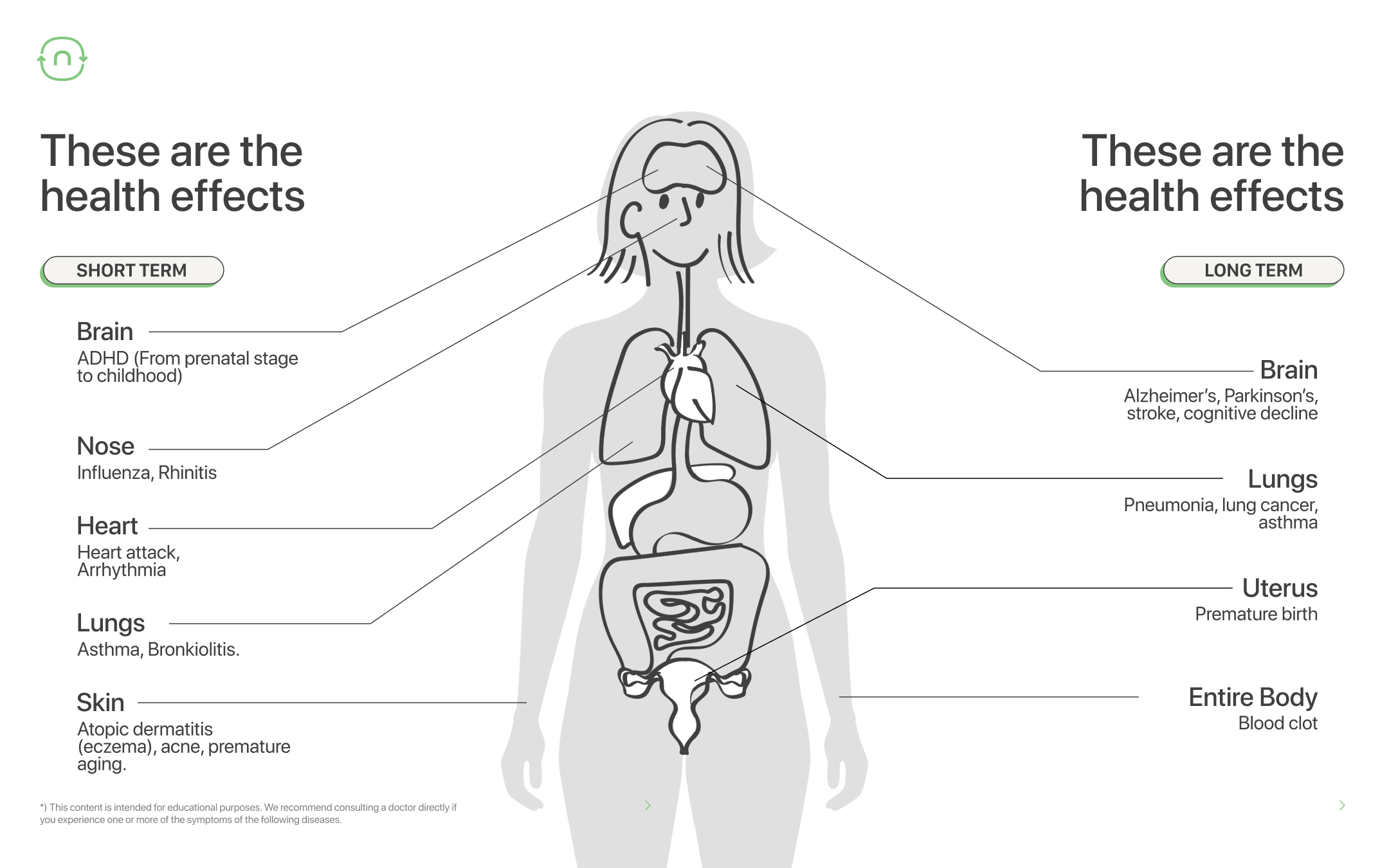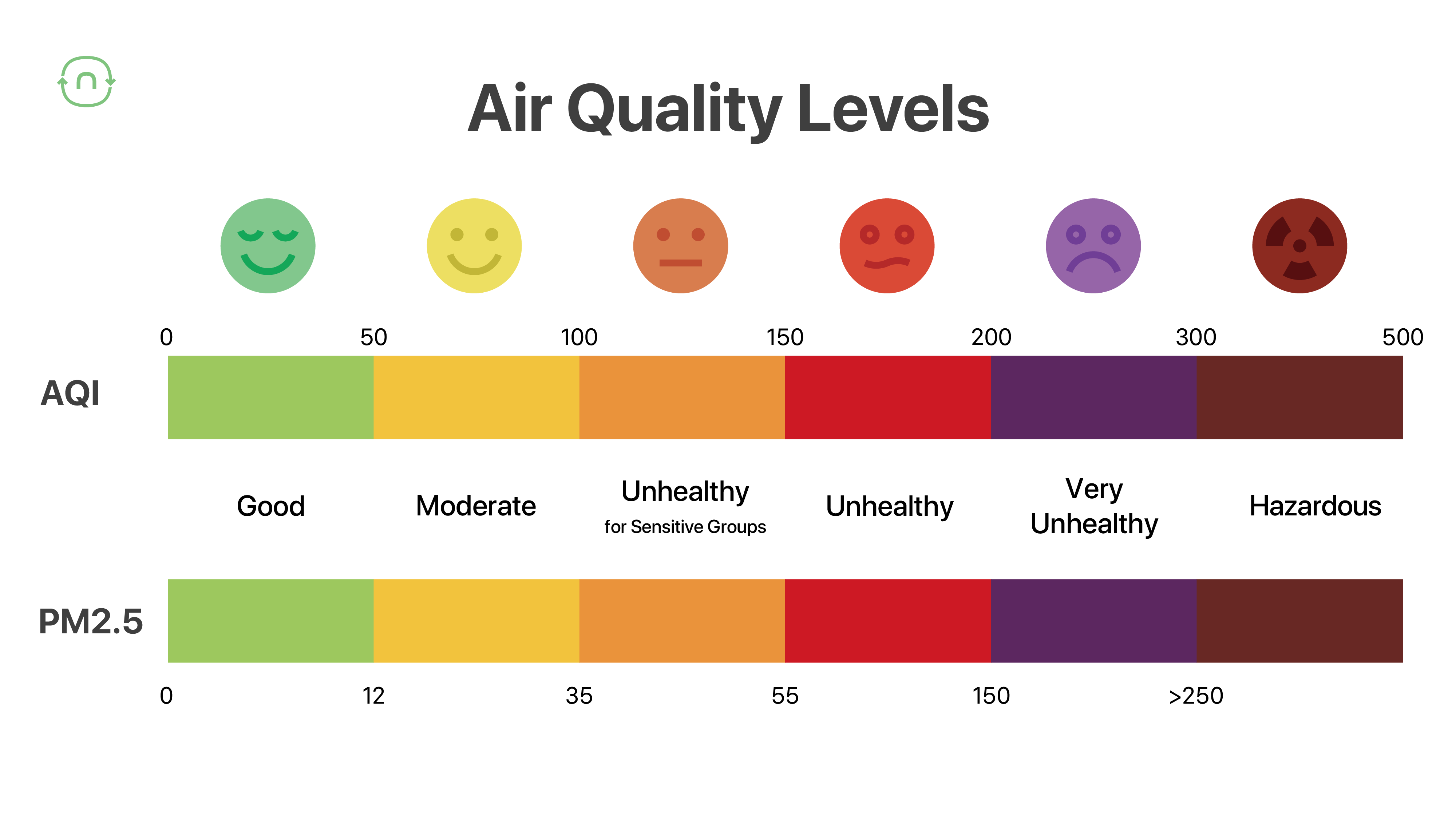LEARN / ARTICLE
Is PM2.5 bad for my health?
Keypoints:
- PM2.5 particles pose serious health risks, affecting lungs and bloodstream.
- There will be short-term and long-term effects from being exposed to high levels of PM2.5.
- Jakarta residents lose 4.8 years of life expectancy due to PM2.5.
- No safe level of PM2.5—health impacts occur even at low levels.
- Medical advice: Seek help if symptoms worsen on polluted days.
- Importance of air quality awareness and data for health protection.
PM2.5 particles can cause serious health problems, both short-term and long-term. Made up of chemicals like nitrates and sulphates, these particles are so small that they are easily absorbed into our bloodstream and can get deep into our lungs.
Short term and long term of PM2.5

Short-term exposure to PM2.5 seems to make pre-existing health problems worse. Short-term in this context means days or even just hours of exposure. It can lead to:
- Brain: Attention-Deficit/Hyperactivity Disorder (ADHD)
- Nose: Influenza, rhinitis
- Heart: Heart attack and arrhythmia
- Lungs: Asthma, bronchitis
Long-term exposure to PM2.5 not only causes diseases but also increases the rate of illness progression (how fast you become seriously ill). Long-term in this context means years of exposure. It can lead to:
- Brain: Alzheimer's, Parkinson's, stroke, and cognitive decline.
- Lungs: Pneumonia, lung cancer, asthma.
- Uterus: Premature birth.
- Entire body: Blood clotting.
The average Jakarta resident will lose 4.8 years of their life expectancy
PM2.5 also has a serious impact on life expectancy. In Jakarta, the average resident will lose 4.8 years from their life expectancy due to air pollution. Much of this impact is due to PM2.5.
Children, elderly, pregnant women and people with pre-existing conditions are more vulnerable
Some groups of people are more vulnerable than others when it comes to air pollution. People with asthma, people with lung disease, and people with heart disease are particularly affected and should reduce their time in polluted air as much as possible. Pregnant women and their babies are also at risk, as are young children and elderly people. For more information, please see the dedicated sections on these three groups.
There is no healthy threshold

Even at very low concentrations, PM2.5 can have health impacts. In fact, no threshold has been identified below which no damage to health is observed. This is why the WHO air quality guidelines aim to achieve the lowest concentrations of PM possible.
If you experience any of these health issues and your symptoms are worse on bad air pollution days, it is best you see a doctor as soon as possible.
Because the impacts of PM2.5 and other pollutants are so bad for our health, it is important that we understand, measure, and use data on air quality.
Related articles:
- Is PM2.5 dangerous for pregnant women?
- Is PM2.5 dangerous for elderly people?
- Is PM2.5 dangerous for children?
- For the First Time, PM2.5 Is Discovered in Unborn Babies: A Study Found
- How does PM2.5 pollution affect children's risk of ADHD and autism?
References
Air Quality Life Index. 2020. Indonesia Fact Sheet.
Apte, Joshua S., Michael Brauer, Aaron J. Cohen, Majid Ezzati, and C. Arden Pope III. 2018. ‘Ambient PM2.5 reduces global and regional life expectancy’, Environmental Science and Technology Letters 5(9):546-551. https://pubs.acs.org/doi/10.1021/acs.estlett.8b00360